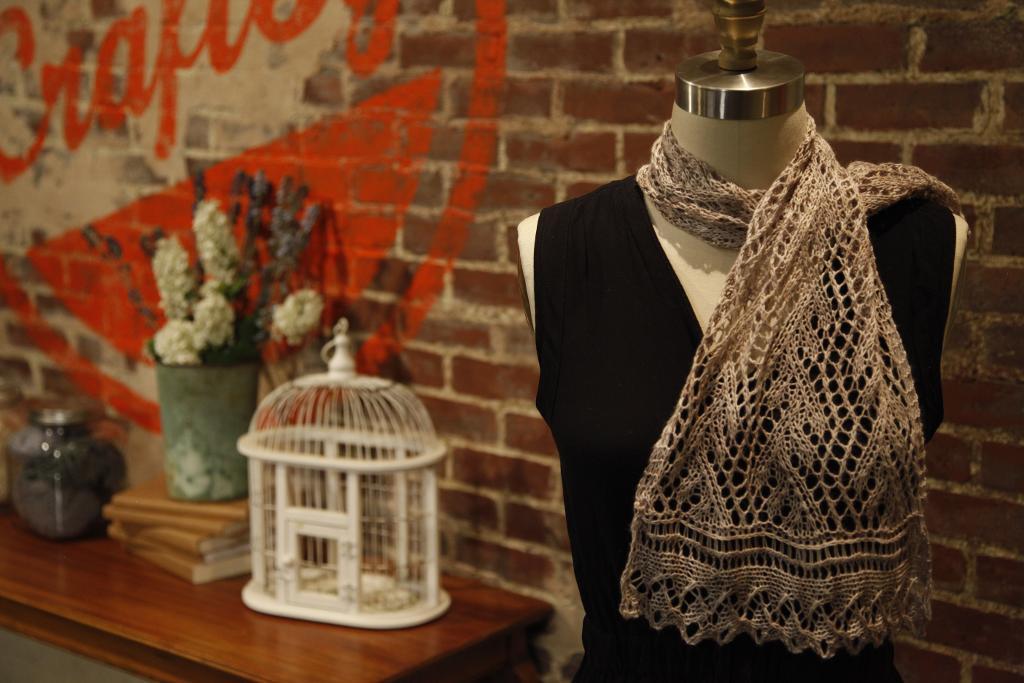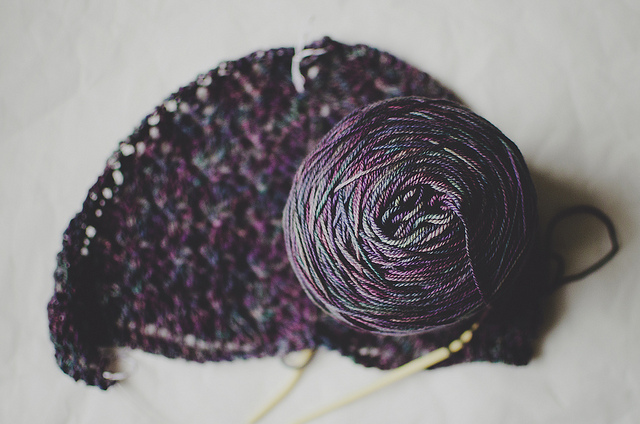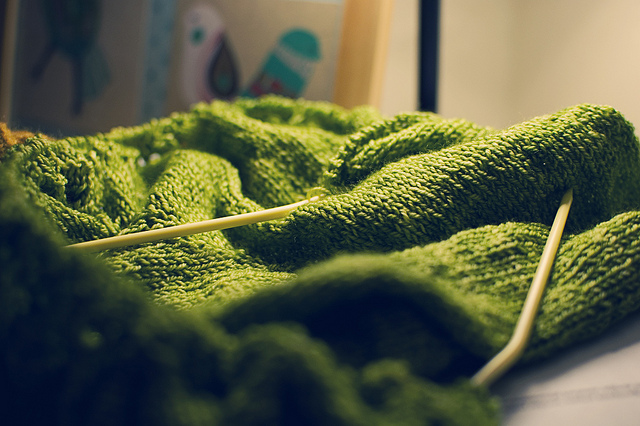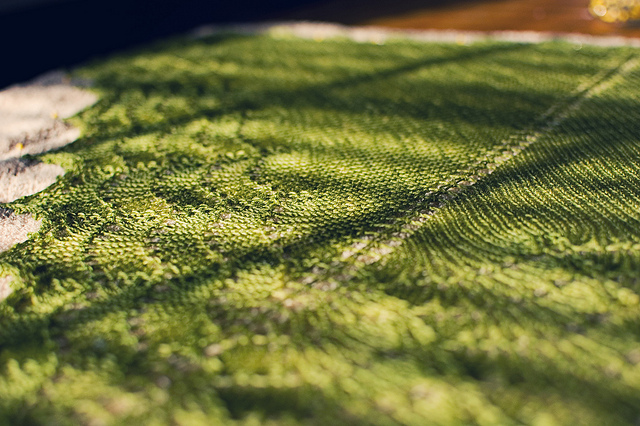So you want to try knitting lace? Best decision! Knit lace is a fabric beyond compare. Even the most simple stitch patterns look intricate and impress many. There isn’t much you need to know before diving in, but I want to give you a few beginner lace knitting tips to help get you started. We can all use tips, right? If anything, I hope you read this and at least feel more comfortable about beginning your adventures in lace knitting.

Photo via Eunny Jang
The pattern

Photo via Maiden Brooklyn
Choose a pattern you will love. You might want to choose something free to start, or one you can look over, or one with a really detailed description. Is it a written pattern or just charts? You may need to develop your knit graph reading skills before beginning. Lucky for you, that skill is terribly useful in all aspects of knitting. The sooner you are comfortable reading a chart, the sooner the world of knitting will be at your fingertips.
Anyway, choose a pattern that speaks to you and you will want to show off and use. The free lacy shawl pattern seen above has a combination of charts and written instructions. I think it would be perfect for beginners!
Yarn talk

If it’s possible, use the yarn recommended with the pattern. If not, find one of similar yarn weight. A gauge may not be listed. For once, gauge isn’t all that important! You want your tension to be loose (you will have to use a larger needle than you normally would with that yarn), but you will be blocking your finished item to the specified dimensions.
The fiber is more important. Wool is a personal preference, but if you are knitting a stole or shawl for the warmer spring/mummer months, you may want a plant-based fiber. Natural fibers are generally used because they are far, far easier to block.
Needles & notions

As I mentioned before, you will be using a larger needle than you are accustomed to with the yarn you select. In the past, when I’ve knit lace, I have used sock or fingering weight yarn and a 4mm (US 6) needle. Use what the pattern calls for or at least 3 sizes bigger than the yarn company suggests.
It is always helpful to have a set of double pointed needles and a circular or two (16″ and 29″ are the sizes I use) of the same needle size. You can fit A LOT of stitches on a 29″ circular, so it’s rare to need anything bigger, unless we move into lace blanket or tablecloth territory.
The needle material isn’t terribly important, but a lot of knitters prefer the smoothness of metal and how stitches glide more easily on them.
Other notions you may find useful are:
- Stitch markers can help you keep track of stitch repeats
- Spare (smooth!) yarn can be used as a lifeline
- A crochet hook can be used to pick up dropped stitches and can be utilized for casting on or for borders. (Hooks are awesome, so you should have some anyway!)
- Foam or towels are great for blocking on
- PINS and wires, the latter is less important but you need PINS!
The knitty gritty

Gather your materials and find a nice quiet spot — it’s time to start! Read through the pattern once or twice (or more) to get a feel for how it will develop. Surprises in knitting are rarely awesome, so let’s avoid them, OK?
Use a lifeline to make you feel less anxious about messing up. I know what it’s like to frog hundreds of stitches and let’s just say that it is infinitely better than frogging thousands. A lifeline is simply a piece of smooth yarn or floss threaded through a row of your knitting. If you mess up a few rows after a lifeline, you only have to frog back to the line instead of frogging your whole project. I suggest adding a lifeline every 10 or so rows, or after you complete a stitch pattern.
After binding off, you will have a weird lump of maybe pretty knitting. Really, though, you will likely question why you just spent hours upon hours working on this. Has it all been in vain?
Blocking

Learning how to block your knits is relatively easy, and blocking can be done in just a few easy steps.
Step 1:
Fill a tub/bucket/bowl with warm water and a drop of conditioner, lanolin or even baby wash. Gently submerge your fabric and let it soak for a while. Try your best not to agitate it too much, but make sure the water permeates the fibers completely.
Step 2:
After it has thoroughly soaked, empty the water and very gently squeeze the excess water from the yarn. You might even want to wrap the piece in a towel and squeeze. Try to get it to a stage of dampness that isn’t dripping.
Step 3:
At this point, lay it flat on towels placed on foam or a bed (something to pin on!) and start stretching and pinning the lace to the appropriate shape. Adjust the pins as necessary and let it dry overnight or beneath the breeze of a fan for a few hours.
For more information about blocking, see Kate Atherly’s class, Blocking Handknits.
Now you know what all that work was for. Now, it was worth it. Now, you want to knit lace all the time and for everyone you know. Or maybe that’s just me?
For even more information about knitting lace, check out Eunny Jang’s class, Lace Knitting: Basics and Beyond. This class will literally guide you through lace knitting! Learn various cast-ons, bind-offs, stitch patterns, blocking tips, etc. You will not be disappointed!

where is the pattern for the second picture?